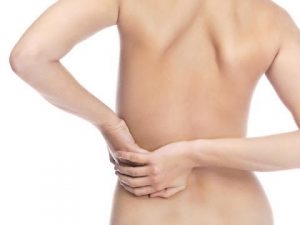
You’ve had a great workout. You felt great. Then, the next day, you hurt. Bad. This is called Delayed Onset Muscle Soreness, or DORS. But what causes muscle soreness, and how can you deal with it? Here’s some tips.
What Is Delayed-Onset Muscle Soreness (DOMS)?
When you workout, what you’re doing is creating micro tears in your muscles. This is normal, as this is actually how you grow and build muscle. As your body repairs these micro tears, this is how your muscles get stronger – they are rebuilding to handle this new level of stress.
But, this stress – this damage, causes inflammation. It’s this inflammation is what causes your muscle soreness, as it’s a symptom of the muscle breaking down to be rebuild.
Since your body adapts to this need to acquire more strength or endurance, it build more muscle tissue during the rebuilding process. But, this inflammatory period can last 24-48 hours, as your body moves blood flow along with hormones and proteins to assist with healing, followed by your muscles being filled with excess blood and cellular fluid. This puts pressure on structures in the area of the affected muscles, which is what causes the muscle pain you’re feeling.
What If You Don’t Feel Muscle Soreness After a Workout?
Many times your workouts result in muscle tears and yet, you don’t feel post-workout soreness later. This doesn’t mean you didn’t have a good workout. It may just mean that the “damage” you did wasn’t severe enough to cause enough inflammation to cause pain.
What Does It Mean If You Don’t Get Muscle Soreness After a Workout?
According to Callaghan, you don’t always need to feel DOMS after a workout to prove that you worked hard enough. Just because you aren’t debilitatingly sore doesn’t mean you didn’t get stronger or gain muscular endurance. You’re still creating those micro tears and building muscle, but they’re not as severe, so the amount of inflammation is decreased. And, the more hydrated you are before and during your workout can make a difference the amount of DOMS you experience as well.
How To Treat DOMS
The last thing you want to do is push through another hard workout. The pain you’re feeling from that last workout, is your body telling you that you need to slow down and heal before doing another agressive workout. Not to mention, you also run the risk of injury – both to your already sore muscles, and possible to other muscles as well. DOMS causes you to autmatically use your muscles differently, as your body engages other muscles to take strain off the sore ones.
The best way to deal with DOMS is to simply rest those sore muscles for at least 48 hours prior to subjecting them to another workout. Make Make sure you’re properly hydrated before, during, and after exercise, and avoiding significantly intense workout sessions until your soreness passes or improves. If it doesn’t within the 36- to 48-hour time frame, make an appointment with your doctor immediately.
And, there are some fitness accessories that you can use to work the kinks out of those muscles as well as stimulate blood flow to help them heal faster. At Fitness 4 Home Superstore, we offer a variety of muscle therapy tools and accessories that can help your post recovery process. Visit any of our three Phoenix-area stores to see our full selection!

